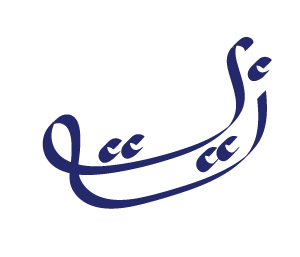Cultural diffusion is a phenomenon that has shaped societies throughout history, leading to the exchange of ideas, customs, and beliefs between different cultures. This essay will explore the concept of cultural diffusion and delve into its profound impact on society. To do so, we will examine several key aspects under the following headings:
Definition of Cultural Diffusion
Cultural diffusion is the process through which cultural elements spread from one society or cultural group to another. These cultural elements can include tangible aspects like clothing, food, tools, and architecture, as well as intangible elements such as language, religion, customs, and ideas. This phenomenon is not limited by geographical boundaries and can occur through various means, shaping the way societies interact and evolve.
Mechanisms of Cultural Diffusion
Trade and Commerce
Historically, trade routes like the Silk Road facilitated the exchange of goods and cultural practices between distant civilizations. Valuable commodities were not the only things traded; ideas, technologies, and customs also traversed these routes.
Migration and Travel
When people move from one region to another, they bring their culture with them. This can lead to the adoption of their customs by the local population and vice versa. For example, the migration of Italians to the United States brought pizza and pasta to American cuisine.
Conquest and Colonization
Through conquest and colonization, dominant cultures often imposed their language, religion, and customs on conquered territories. This resulted in a fusion of cultures, where elements of both the conquerors and the conquered were incorporated.
Technological Advancements
Advances in transportation and communication technology have accelerated cultural diffusion. The internet, for example, has made it possible for ideas, trends, and information to spread globally in real time, leading to the rapid diffusion of pop culture and lifestyle trends.
Cultural Exchange and Diplomacy
Cultural diffusion can also occur through peaceful means, such as cultural exchange programs and diplomatic relations. Countries often showcase their art, music, and traditions to promote mutual understanding and appreciation.
Media and Entertainment
Movies, television, music, and social media have a profound impact on cultural diffusion. They expose people to different lifestyles, fashion, and ideas, influencing the way they perceive and adopt elements of other cultures.
Globalization
The concept of globalization, driven by economic, political, and social interconnectedness, has amplified cultural diffusion. Multinational corporations, for instance, introduce products and advertising campaigns that transcend borders, affecting consumer behavior and cultural practices.
In essence, cultural diffusion is a dynamic process shaped by the interactions and exchanges between diverse cultures. It is a fundamental aspect of human history and continues to play a pivotal role in shaping societies worldwide.



Enrichment of Cultural Diversity
One of the primary impacts of cultural diffusion is the enrichment of cultural diversity within societies. As different cultures interact and share their traditions, it leads to a vibrant blend of customs and practices. This fusion often results in the creation of unique cultural identities that celebrate both local and foreign influences.
Cultural Diffusion in Fashion
Fashion is one of the most visible forms of cultural diffusion. Different cultures have distinctive clothing styles, and over time, these styles often blend through interaction. For example, the kimono from Japan has influenced modern-day dressing gowns, and the Indian sari has inspired elegant evening gowns.
Cultural Diffusion in Food
Food is a rich source of cultural diffusion. As people from different cultures interact, they exchange recipes, ingredients, and cooking techniques. Sushi, a Japanese dish, has become popular worldwide, and the use of spices from India has transformed cuisine in many countries. Fusion cuisine, like Tex-Mex or sushi burritos, is a prime example of the blending of culinary traditions.
Cultural Diffusion in Lifestyle
Lifestyle encompasses various aspects, including daily routines, leisure activities, and social norms. For instance, the practice of yoga, rooted in Indian culture, has gained global popularity as a form of exercise and stress relief. Similarly, the concept of siestas, originally from Spain, has influenced work-life balance in some countries.
Cultural Diffusion in Marriages
Marriage rituals and customs often reflect cultural values and traditions. Cultural diffusion in marriages can be seen in the adoption of customs from one culture into another’s ceremonies. For instance, the exchange of rings during weddings is now widespread, but it has its origins in European customs. Additionally, intercultural marriages bring together diverse traditions and create hybrid ceremonies that celebrate both backgrounds.
In all these areas, cultural diffusion plays a significant role in shaping our world. It promotes diversity, fosters creativity, and enables societies to learn from one another, ultimately contributing to a more interconnected global community.



Advancements in Technology and Innovation
Cultural diffusion has historically played a significant role in the exchange of technological knowledge. For example, the Silk Road facilitated the transfer of scientific, mathematical, and engineering innovations between Asia and Europe. This sharing of knowledge has contributed to the progress of societies by accelerating technological advancements.
Adaptation and Cultural Change
As cultures encounter one another, they often undergo adaptations and changes. Societies may adopt certain practices from other cultures, modify them to fit their needs, and create something entirely new. This process of adaptation is essential for the survival and growth of societies in an ever-changing world.
Conflict and Resistance
While cultural diffusion can promote harmony and understanding, it can also lead to conflict and resistance. When societies perceive foreign influences as threats to their traditional values, they may resist change and even engage in cultural clashes. Understanding these dynamics is crucial for addressing cultural conflicts in a globalized world.
More Acceptability for Cultural Diffusion:
Urban Centers
Major cities and urban areas often exhibit higher acceptability for cultural diffusion. These places are hubs of diversity, where people from various cultural backgrounds interact regularly. Consequently, urban dwellers are typically more open to adopting and adapting elements from different cultures.
Tourist Destinations
Locations that attract tourists from around the world tend to be more open to cultural diffusion. These areas recognize the economic benefits of embracing diverse cultures, including cuisine, art, and traditions, to cater to a global audience.
Cosmopolitan Regions
Regions that have a long history of multiculturalism and international trade, such as coastal cities and port towns, often have a more accepting attitude towards cultural diffusion. These areas have a tradition of cultural exchange and are accustomed to incorporating foreign influences.
Educational Institutions
Colleges, universities, and research institutions promote cross-cultural interactions. Students from various backgrounds study and live together, fostering an environment that encourages the exchange of ideas and customs.



Less Acceptability for Cultural Diffusion
Remote and Isolated Areas
In remote or isolated regions, there may be less acceptability for cultural diffusion due to limited exposure to external influences. People in these areas may be more conservative in preserving their traditional ways of life.
Conservative Communities
Certain communities or religious groups may resist cultural diffusion, particularly when it challenges their established norms and values. They may view outside influences as a threat to their cultural identity.
Ethnically Homogeneous Areas
In regions with a high degree of ethnic or cultural homogeneity, there may be less openness to cultural diffusion. The population may have a strong sense of cultural cohesion and be less inclined to adopt foreign customs.
Political and Social Instability
Areas experiencing political or social unrest may be less open to cultural diffusion as the focus often shifts towards preserving existing cultural and social structures during turbulent times.
Cultural Preservation Efforts
Some regions actively work to preserve their cultural heritage and traditions. In such cases, there may be deliberate efforts to resist foreign influences and maintain a purist approach to culture.
It’s important to note that these are general trends, and attitudes toward cultural diffusion can vary widely within and between regions. Acceptability depends on factors such as historical context, economic considerations, individual beliefs, and government policies. In today’s interconnected world, cultural diffusion is inevitable to some extent, but the degree to which it is embraced or resisted can vary significantly.
Globalization and Homogenization
In the contemporary era, the rapid spread of information and communication technologies has accelerated cultural diffusion to an unprecedented extent. This has led to concerns about cultural homogenization, where local traditions and identities are overshadowed by globalized trends. Striking a balance between preserving cultural heritage and embracing global influences is a challenge societies face today.
Conclusion
In conclusion, cultural diffusion is a multifaceted phenomenon that has left an indelible mark on societies throughout history. It fosters diversity, drives innovation, and shapes the way we perceive the world. However, it also presents challenges in terms of cultural conflict and homogenization. To navigate these complexities, societies must engage in open dialogue and promote cultural exchange while preserving their unique identities. Embracing the positive aspects of cultural diffusion can lead to a more interconnected and enriched global society.

